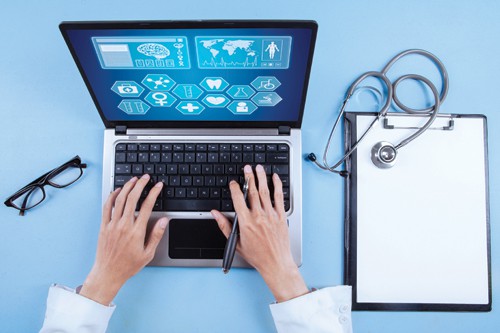
At the beginning of last year, we were invited to identify five distinct areas where technology would have an impact on the world of healthcare. The selections made by my colleague were as follows: technology partnerships; compliance apps; artificial intelligence; the increased use of 3D printing; and finally, somewhat most ambitiously, the bionic person.
How did we do? Well let’s start with the last two combined as August saw the UK winner of the James Dyson award go to technology start-up Open Bionics for its prototype 3D-printed robotic hand. Unlike traditional prosthetics which can take weeks or months to obtain, Open Bionics claims to be able to 3D-scan an amputee and build him or her a custom-fitted socket and hand in less than two days. While admittedly not a bionic person, this clearly has the potential to be a game changer. For technology partnerships, artificial intelligence and integrating existing and new technologies, we need look no further than IBM’s recent $1bn takeover of Merge Healthcare, a leading provider of medical image handling and processing. The planned integration of Merge Healthcare’s capabilities with IBM’s Watson platform means we are now conceivably a step closer at seeing a computer determine a diagnosis from a scan or x-ray.
As for compliance apps, a recent example which shows the potential of these in helping to encourage patient adherence to medication regimes is the development of smart inhalers. AstraZeneca is just one of many pharma companies partnering with Adherium, an Australian company that makes a line of FDA cleared smart inhaler attachments. In addition to collecting and analysing usage data via the partnering app, alerts can be set by the user or automatically generated in the case of missing doses of controller medications and increased use of rescue medications.
However, before we get too self-congratulatory, when we look at the bigger picture we find that while there is no doubt that digital technologies continue to have a significant voice in healthcare, the reality is that the uptake of such technologies remains far behind other industries. For a general example you only need to compare the increasingly online world of banking and shopping with our typical healthcare interactions where physicians rarely even use email to communicate with patients.
The digital offerings that are available remain fragmented with competing technologies and brands
The uptake issue
So what are the reasons for this lag? It has to be said that there is a generational element at work here, at both an HCP (Healthcare Professional) and a patient level. While this will inevitably change in time, perhaps more significant factors include a general lack of guidelines for the adoption and use of technology, continued restrictions on the use of patient records and an underlying lack of integration between different systems used within the world of healthcare. On top of this, the digital offerings that are available remain fragmented with competing technologies and brands. With no clear universal leaders emerging, it is understandable that HCPs have a lack of confidence and an unwillingness to implement digital technology solutions that may end up obsolete, or useful to a minority of tech savvy patients. These barriers alongside universal acceptability were shared in a global survey ‘The Digital Health Debate’ conducted by Cello Health Insight in 2015.
Despite this, the survey also revealed that 42% of doctors felt mobile apps could be a game changer and 44% had at some time recommended an app for their patients (rising to 63% among US specialists).
So what are the factors that will help increase the uptake of digital technology within healthcare? Arguably one of the most significant influences will come from the growing pressures within healthcare systems themselves, internal and external, to meet increased demands on services and resources. In the UK, the current debate around 24/7 service provision might well be the additional pressure that makes the use of telemedicine and video consultations a much more attractive mainstream option. The technology itself is relatively simple and is already in widespread use elsewhere in business as well as other healthcare systems, especially the US where apps including Doctor on Demand, HealthTap, HelloMD and LiveHealth Online are already recognised as changing healthcare. Typical benefits coming from the adoption of telemedicine and remote healthcare as a whole include time and cost savings through increasing preventative care, reducing time to access and eliminating unnecessary visits to a medical facility for consultations.
These time and cost savings along with improved patient access and convenience have also been highlighted in the recent Digital Health and Care Congress hosted by The King’s Fund. While in the short-term, this will concentrate on using such technologies to relieve pressures such as implementing online appointments, tests and referrals, they may also act as a catalyst to greatly improved monitoring technologies, with diabetes being a huge area which could benefit from this. Not only would this have a huge positive impact in terms of relieving the strain on services, it would help to empower patients to become ‘expert patients’, better able to take responsibility for their condition.
And empowering patients will itself act as a driver to increased uptake in digital services. This can be at every level from using apps to help better manage chronic conditions through to providing general patient education and information via smartphones. We can also expect a much greater use of health and fitness apps and wearables – both by personal choice and HCP recommendation. From here it’s a logical step towards using apps and related technology not just for the maintenance of health and monitoring and control of disease, but also the detection of symptoms and diagnosis of conditions. This can be at an individual level where apps are already at a developmental stage of being able to detect early signs of dementia and Alzheimer’s through to the huge data collection and analytic capabilities offered by IBM’s Watson, Apple’s Healthkit and Microsoft Health Vault. These will be manifest not just in the provision of individual diagnoses but in deeper insights into the use of personalised medicines, ie the segmentation of patients who are more and less likely to benefit from treatment.
Our industry has often been accused, wrongly in my view, of not stepping up to the mark and leading the way forward
Pragmatism in action
So what is pharma doing in light of the above? Our industry has often been accused, wrongly in my view, of not stepping up to the mark and leading the way forward. Leaving aside that regulatory concerns and approved adoption guidelines are external factors, there is the very real fact that this is a very risky area of business to pursue. How risky can be shown by recent research from Accenture which, based on historical funding data and the analysis of 900 healthcare IT start-ups, predicted that within two years of life, 50% of these will fail. The total funding consumed between 2008 and 2013 by these failed start-ups was $4bn.
In light of this perhaps it might be better to view pharma as wise, pragmatic business people aware that in order to make a genuine impact, you have to get beyond the hype. However, if the trends outlined above begin to gather their anticipated momentum, pharma would do well to continue increasing their digital spend and explore ways to capitalise on this. For example, how can they support video and telemedicine initiatives in terms of virtual monitoring and disease management? How can digital offerings be offered that integrate seamlessly within existing health electronic management systems? How can pharma support the fact that the main focus of the burden of disease today is chronic multiple pathologies and not episodic disease?
One example of such pragmatism in action is the company that recognised that Bleep systems are still used within hospital and subsequently developed a technology that replicates the same principle but uses doctor’s and HCP’s own smartphones. In other words, it recognised a genuine need, saw a genuine opportunity and developed a suitable technology. With the uptake of digital within healthcare poised to increase in terms of speed and scale, this would be a principle well worth remembering.





